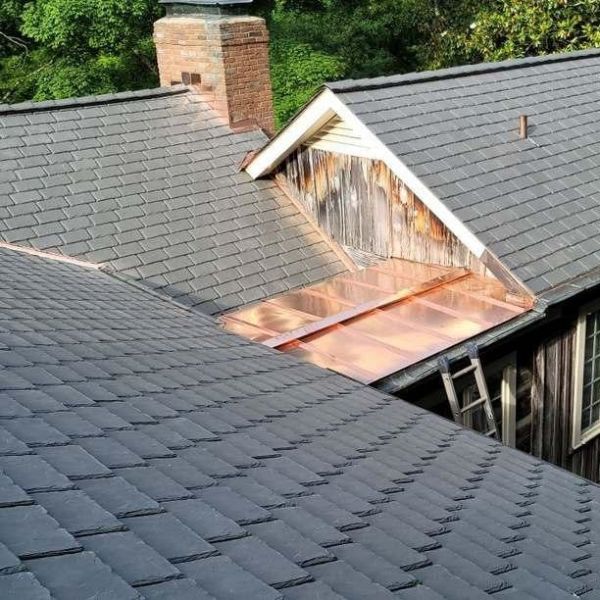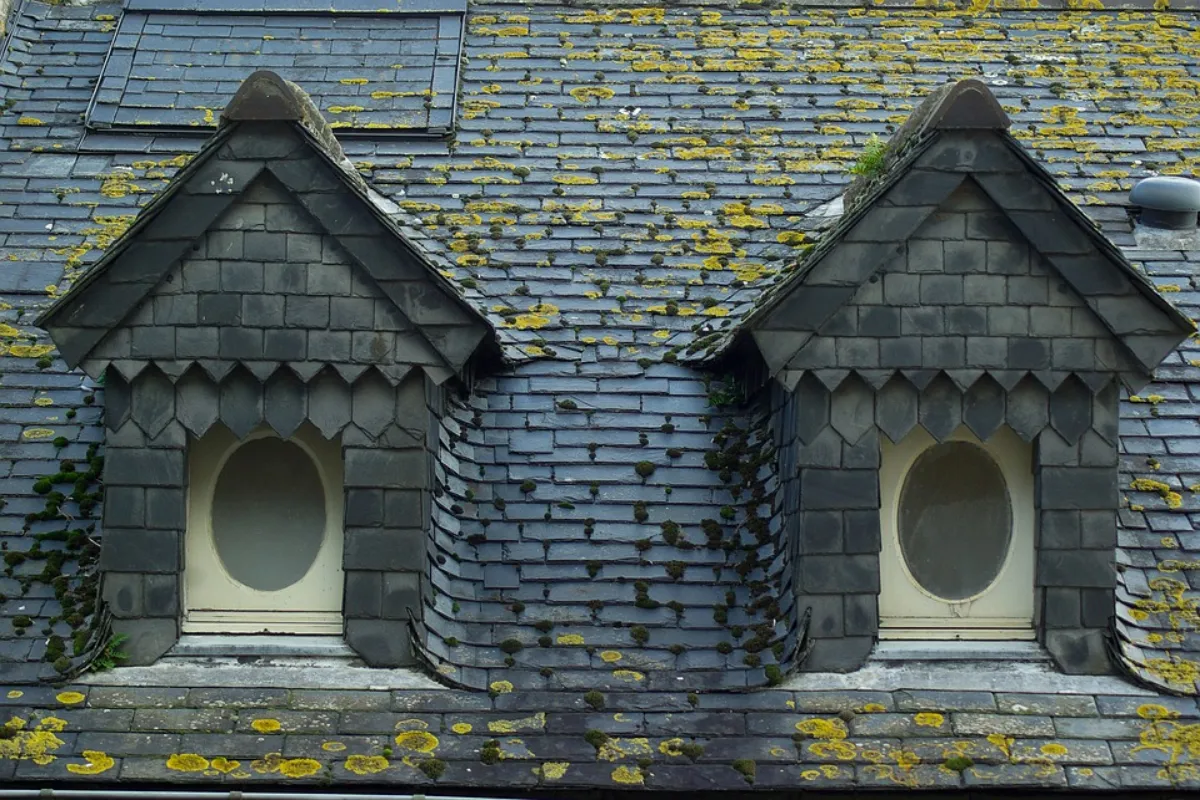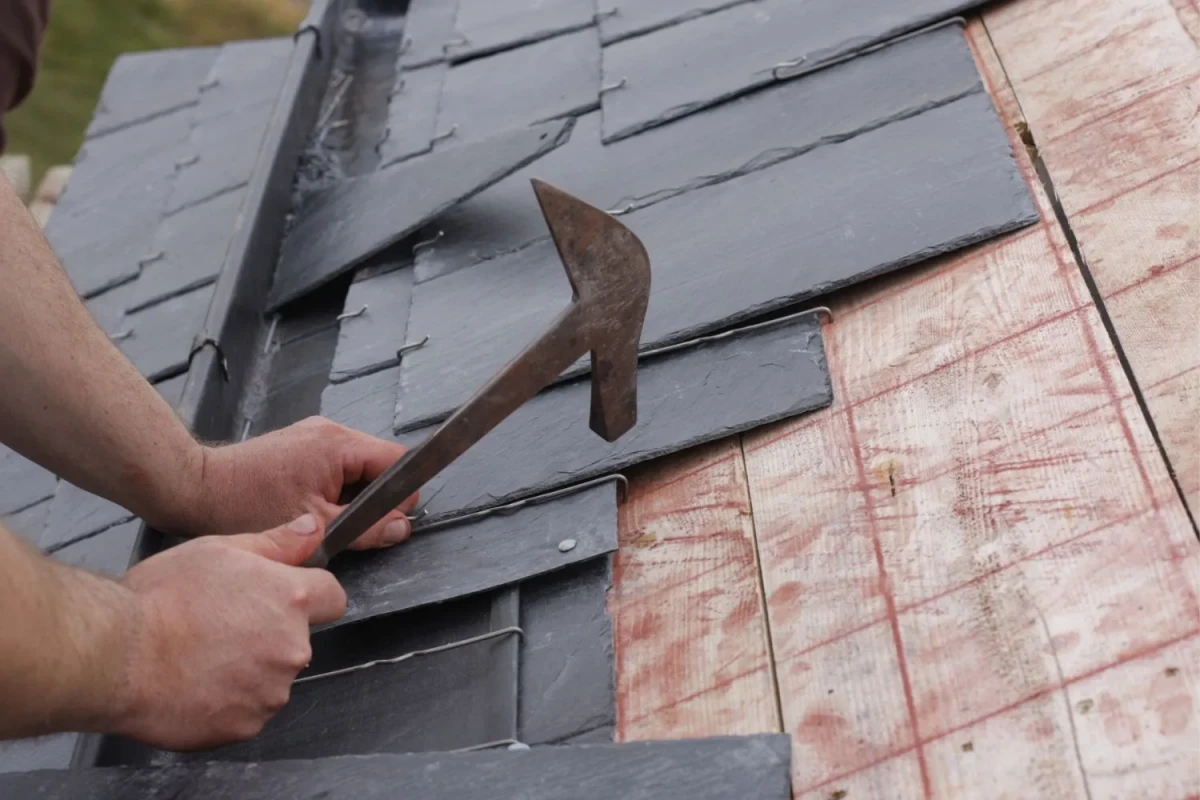Man-Made Slate vs. Natural Slate: Unraveling the Differences
People have appreciated slate roofing for its enduring beauty, strength, and natural charm over centuries. When deciding on the ideal slate roofing material, you typically encounter two main choices: natural slate and man-made (synthetic or composite) slate. This age-old roofing material has graced historic buildings and modern homes alike, proving its timeless appeal. As you weigh your options for roofing, exploring the differences and benefits of these two main choices can guide you towards the perfect selection for your project.
Natural Slate:
Natural slate, originating from sedimentary rock formations, predominantly shale or clay, which have been compressed and heated over millions of years, possesses a range of remarkable qualities. One of its hallmark features is its:
1. Aesthetic Allure: Natural slate presents a one-of-a-kind, rustic appearance. It boasts an array of variations in color, texture, and patterns. Each slate tile is individually unique, contributing to an organic, earthy aesthetic that many homeowners find truly captivating.
2. Durability: One of the most attractive features of natural slate is its longevity. When correctly installed and maintained, a natural slate roof can last for over a century. It is highly resistant to damage from weather, UV rays, and fire.
3. Eco-Friendly: As a naturally occurring material, natural slate is eco-friendly and sustainable. It requires minimal processing and leaves a minimal carbon footprint compared to synthetic alternatives.
4. Natural Insulator: Slate possesses inherent thermal insulating properties. It helps keep your home cooler in the summer and warmer in the winter, leading to potential energy savings.
Man-Made Slate:
Manufacturers produce man-made slate, which is also called synthetic or composite slate, by mixing materials, usually involving recycled rubber or plastic, with fillers and additives. Here are some characteristics of man-made slate:
1. Consistency: Unlike natural slate, man-made slate tiles are consistent in color, size, and shape. This uniformity provides a neat and tidy appearance to the roof.
2. Lightweight: Synthetic slate is significantly lighter than natural slate, making it easier to handle during installation. This can reduce labor costs and eliminate the need for additional roof reinforcement.
3. Price: Man-made slate is often more budget-friendly than natural slate. It provides a slate-like appearance without the premium cost of natural materials.
4. Low Maintenance: Synthetic slate typically requires less maintenance and can be cleaned with basic household cleaning products. It is also less susceptible to chipping or cracking during handling.
5. Versatility: Due to its lightweight nature, man-made slate is sometimes used in retrofit applications, where natural slate may not be practical.
The choice between natural slate and man-made slate largely depends on your specific needs and preferences. If you appreciate the unparalleled charm of natural materials, the longevity they provide, and are dedicated to environmental sustainability, opt for natural slate. However, if you are working within a budget, desire low-maintenance roofing, and prefer uniformity, then man-made slate could be the better option.
In either case, it’s essential to consult with a professional roofer who can provide guidance based on your unique requirements and budget, ensuring a roofing solution that aligns with your vision for your home. The decision between these slate roofing materials ultimately comes down to a balance between aesthetics, cost, and performance.
2023-10-23





